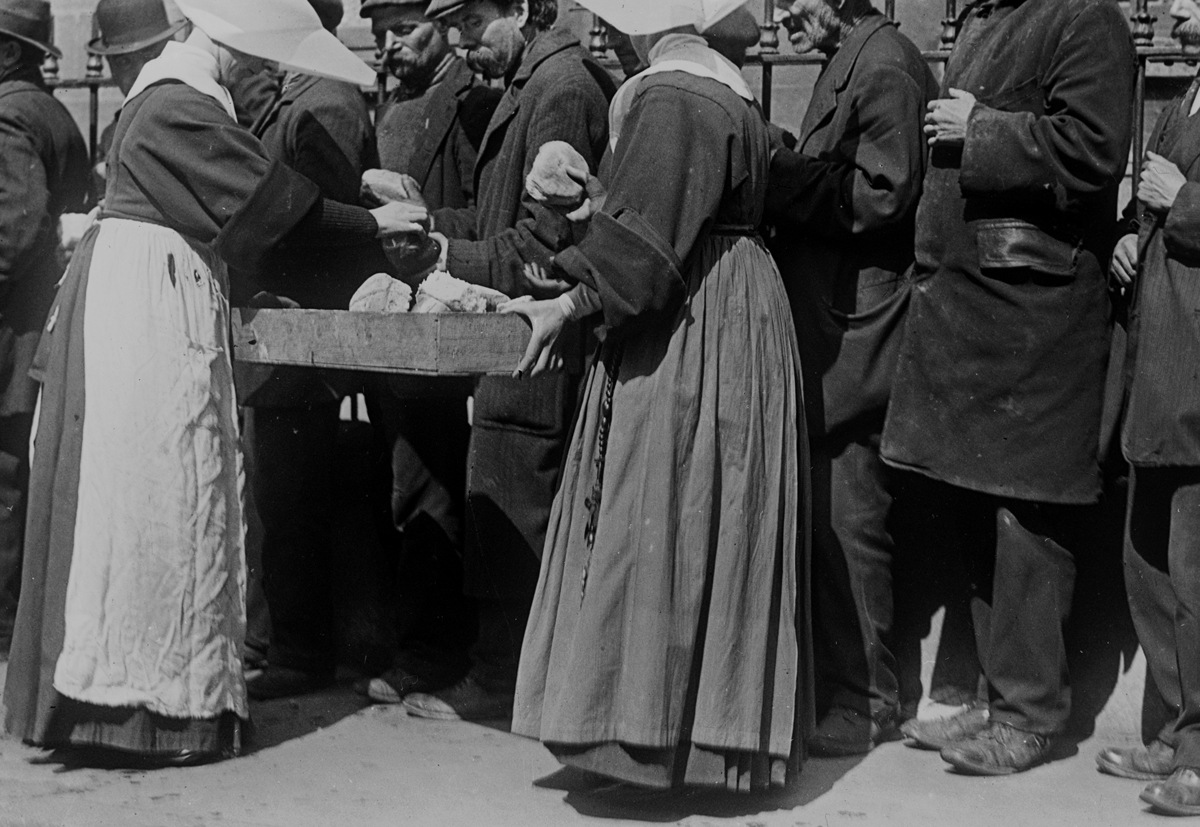Dublin’s homeless crisis becoming more acute
Dublin, 15 January 1921 - The problem of homelessness in Dublin is becoming more acute.
Figures released by the St Vincent de Paul Free Night Shelter on Back Lane in the city centre indicate that there were a total of 16,785 admissions last year, a 5,180 increase on the previous year. In addition the number of free meals supplied has increased by 9,401 to reach a new total of 26,801.
Also included in the shelter’s latest report is a sobering reminder that not all of the people using the shelter were elderly or infirm. They also include labourers, skilled artisans and clerks who may have endured a bad run of luck or a period of severe illness. The report highlighted the fact that for a large section of society it was utterly impossible during times of good health and regular employment to save sufficient funds to tide themselves over if they endured a slump in trade or had to convalesce for a long time after an illness.
‘One cannot be surprised to find among them cases not of depravity, but simply of neglect’, the report stated. ‘For them a visit – a stay of a few nights in the shelter – is a great grace.’ Their time there ‘revives memories of early instructions’ and activates in them ‘an energising love for God which is so easily awakened in our Irish working class.’
‘The cost of food, fuel, lighting, and all incidental charges has gone up alarmingly, and the Committee are forced to make urgent appeal for help in this Christlike work.’
Dr Jacinta Prunty explains the origins of Dublin’s housing crisis in the early part of the 20th century
[Editor's note: This is an article from Century Ireland, a fortnightly online newspaper, written from the perspective of a journalist 100 years ago, based on news reports of the time.]





















